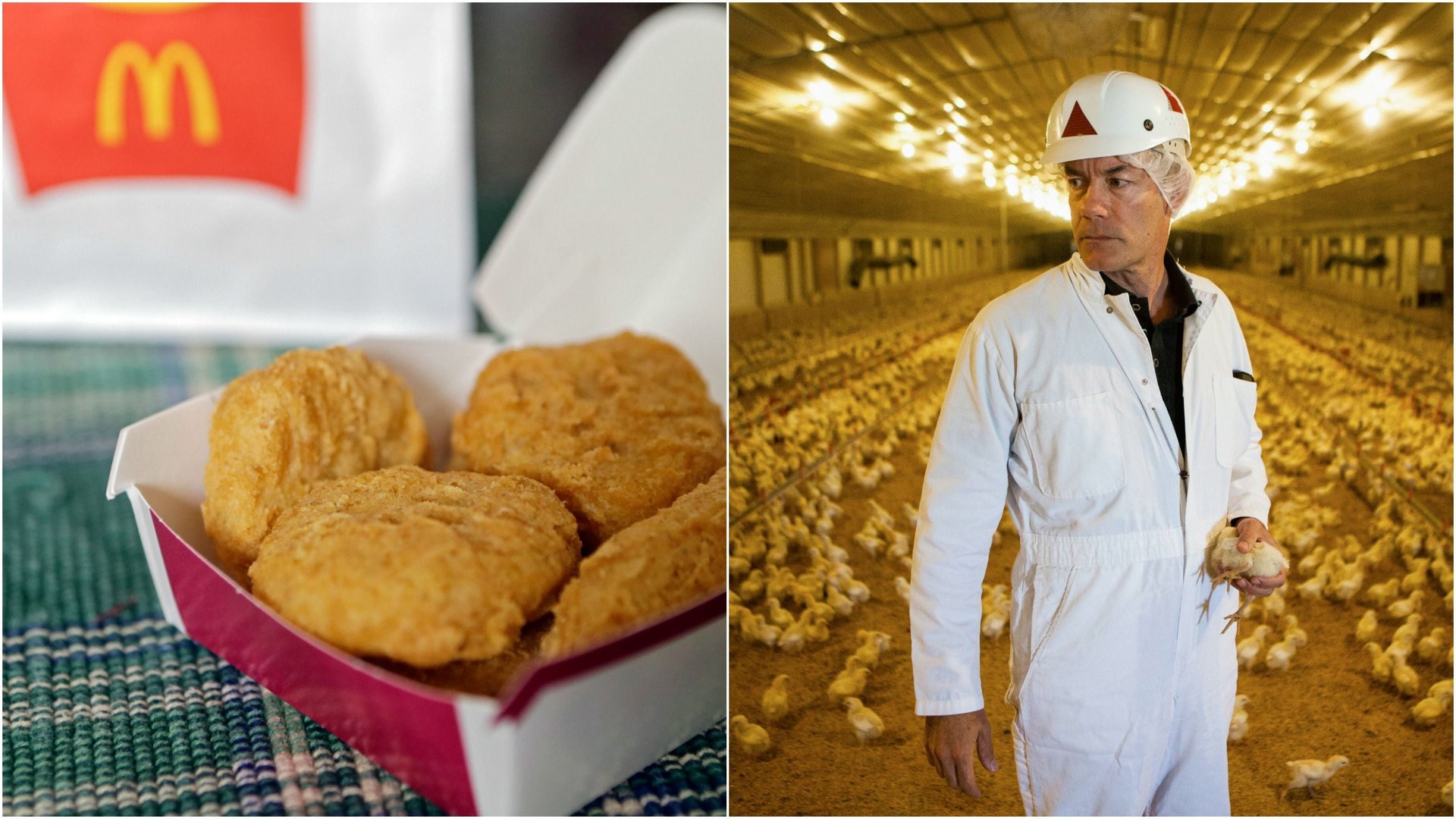The latest weapon in the fight against deadly superbugs: Chicken McNuggets
McDonald’s’ decision to only buy chickens that have been raised “without antibiotics important to human medicine” is being hailed as a necessarily aggressive step to address the growing problem of antibiotic abuse in America’s meat supply chain.


McDonald’s’ decision to only buy chickens that have been raised “without antibiotics important to human medicine” is being hailed as a necessarily aggressive step to address the growing problem of antibiotic abuse in America’s meat supply chain.
The US Food and Drug Administration estimates that 80% of antibiotic drugs in the US are used on livestock and poultry—sometimes for the purpose of treating sick animals but more often to promote growth and guard against possible bacterial infections. Many of these antibiotics are the same ones doctors prescribe for treating sick humans. Persistent widespread use of these antibiotics has the unintended side-effect of allowing whatever antibiotic-resistant bacteria exists in an environment to multiply and spread. All the bacteria that does get killed by the antibiotics simply clears the way for the hardier bacteria to proliferate. Each year these drug-resistant bacteria, or superbugs, sicken more than 2 million people and kill at least 23,000 nationwide.
The FDA reported recently that the quantity of antibiotics distributed for use in food animals actually increased between 2009 and 2012. Over the same time period, however, consumer awareness and demand for antibiotic-free meat appears to have been on the rise (PDF). And restaurants have been paying attention: Panera Bread, Chik-fil-A, and (of course) Chipotle have been limiting antibiotics in their meat supply chains, to varying degrees, for years. Tyson and Perdue, both chicken processors, are in on it, too.
But few have the market power that McDonald’s has. Its 14,000 restaurants in the US make it one of the nation’s largest buyers of chickens.
When a smaller chain, such as Chipotle, holds its suppliers to higher standards, it only changes how those few suppliers do business, says Dave Donnan, who leads Chicago consulting firm A.T. Kearney’s food and beverage division.Indeed, Chipotle’s communications director Chris Arnold, who is able to speak specifically and anecdotally about individual ranchers that provide meat for Chipotle restaurants, says his company “is working in a niche part of the supply chain.” Numbers aside, the poultry, pork, and cattle farms that serve Chipotle operate outside the mainstream system. “These are not commodity animals,” Arnold says of the livestock that ends up on Chipotle’s grills—all of which are not only 100% antibiotic-free but have also been raised under specific “humane” conditions.
In contrast, the chickens that McDonald’s buys come from average, industrial farms. When McDonald’s asks its suppliers to meet higher standards, says Donnan, it’s changing the entire industry.
“The private sector is going to drive change like this faster than legislation and public policy,” says Arnold.
Even though it’s rolling out this change with a grand-sounding vision statement (PDF) that covers all meat, McDonald’s is focusing on chicken. The hamburger chain actually sells more chicken than beef these days, according to the New York Times. And transitioning its entire chicken supply off medically important antibiotics in two years is much easier than implementing the same with beef or pork.
“Chicken is a relatively easy supply chain to impact quickly,” says Arnold. Beef is a toughie because cattle take so much more time to raise.
Since McDonald’s hasn’t committed to changing anything else about the way its chickens are raised, such as giving them more space, implementing the new policy will be even easier.
But McDonalds may have plans to eventually serve antibiotic-free burgers and McRibs too. It also announced Wednesday that it’s a founding partner (PDF) of a new organization called the US Roundtable on Sustainable Beef.